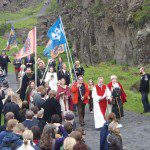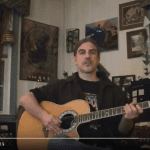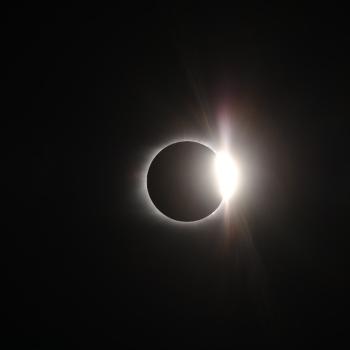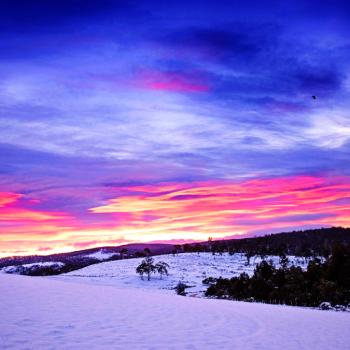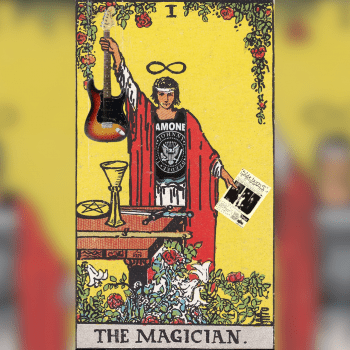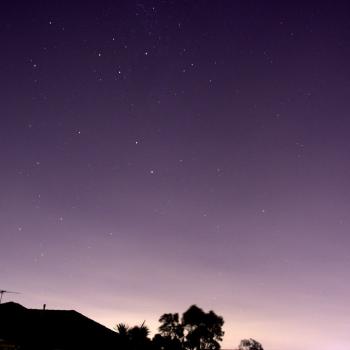Welcome to our mid-week randomness on The Zen Pagan. (A little behind schedule this week, but, well, it’s random!) Bringing you three interesting things before the weekend.
The Sociological Impact of Ritual
NPR reports on recent research into the sociological impact of rituals. The researchers created arbitrary simple rituals and investigated how those rituals affected trust in a game involving sharing money:
…Hobson and the other researchers find that complex rituals change how people interact with one another, especially when it comes to the amount of trust they repose in others. The researchers had volunteers play a game, for example, where they could share money with a partner, but they didn’t know whether the partner in turn would share money back with them.
…Those participants who did do the ritual over the course of the week gave more money or they entrusted more of their own money to fellow ingroup members with whom they shared this arbitrary, minimal ritual. And they actually ended up entrusting less money to their outgroup members with whom they didn’t share this ritual.
…If you can get people to do a complicated ritual and have them do it over a repeated period of days, it turns out that this can increase trust and cooperation.
So rituals can increase social cohesion — great, right? But of course there’s a flip side:
Of course, this research is also pointing to the downside of rituals, which is that even when they’re completely meaningless and made up they can cause us to distrust people from groups that do not share the same ritual.
Assembly-Line Confession
Speaking of ritual, this popped up on Twitter: a sign at a Catholic Church about rules for confession. It reads “Confession today (Saturday) will be until exactly 5:30PM. There is only one priest available for confession today. Make your confession direct and to the point and confess only your sins and offenses. No need to explain why you did it. Thank you very much.” (A little Google-fu shows this has been bouncing around the net for at least a year. but it’s new to me.)
On a lighter note, this sign, spotted at a Catholic Church, reads like a passive-aggressive flatmate angry with people using up the milk. pic.twitter.com/E4687eQBJs
— Alex Andreou (@sturdyAlex) March 29, 2017
Now, if ritual is primarily meant as a means of dividing people into an in group and an out group, this is entirely logical. You either do the ritual and are in the group, or don’t and are out of it. But to the degree that ritual is a means towards mystical or transformative experience, this is awful, an assembly-line approach than can never bring about a religious experience.
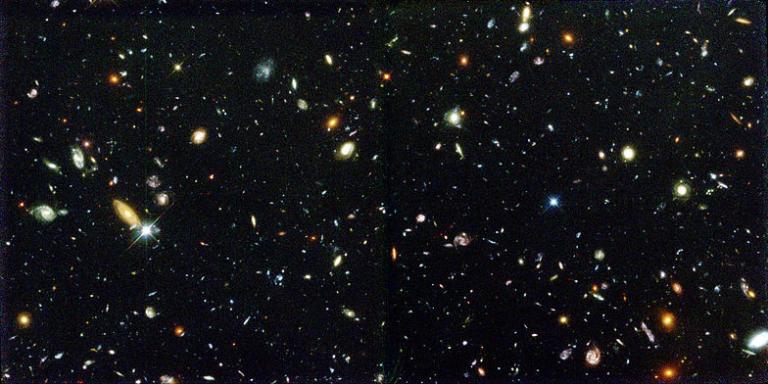
Cosmological Confusion
Today, everyone who’s scientifically literate knows the universe began billions of years ago with the Big Bang. But this consensus didn’t always exist. It didn’t congeal until the 1970s, after the discovery of the cosmic microwave background radiation in 1964.
So in the 1960s and 70s, popular science books still treated the Big Bang as a hypothesis, alongside the Steady State theory. And as a precocious science nerd in the late 1970s reading all the astronomy books in the McCormick Elementary School library — books that may well have been ten or twenty years old, published in the 1960s or even 1950s — that was the impression I got: we still didn’t know if the universe had a beginning in a Big Bang, or had always been here in a Steady State.
Our currently accepted theories about the formation of the solar system and the moon are also rather different than those in my science books back then, which told of how the planets may have been formed when another star passed by the Sun and pulled material out of it, or the Moon formed from material torn loose from the Pacific basic when the early Earth was spinning much faster.
I bring these up to point out that our scientific knowledge of the world, far from being a rock of certainty, is a an ever-shifting interpolation of a limited set of data. That doesn’t means that we don’t have practical surety in some areas: the sun will come up tomorrow, objects will continue to be attracted to one another proportional (in most cases) to the product of their masses and inversely proportional to the square of the distance between them, we share an ancestor with other mammals, and carbon dioxide in the atmosphere traps heat. If anyone wants to bet against these propositions I will be happy to take your money. But on the big questions about cosmology, expect our best scientific ideas to keep changing change.
A current case in point is “dark energy”. In the 1990s, observations of Type Ia showed that, rather than slowing under the influence of gravity, the expansion of the universe is actually increasing. Scientists hypothesized that something called “dark energy” — estimated to make up 68% of the total energy of the universe — was driving the acceleration.
But in a paper recently published in the Monthly Notices of the Royal Astronomical Society, a team of researchers points out that the models that seem to call for the existence of dark energy pretend that the universe is smoothly expanding and homogeneous, while observations shows that our universe has a foam-like structure where matter (both normal and “dark” matter (another thing not in those 70s science books)) exists mostly in thin bubble walls with inconceivably vast and empty voids inside the bubbles.
A computer simulation of how gravity would affect such a structured universe shows an accelerating expansion, like the one we observe, without invoking dark energy.
And so what is currently thought to be 68% of the universe may suddenly disappear, if these calculations hold up. Science can indeed be destructive!


